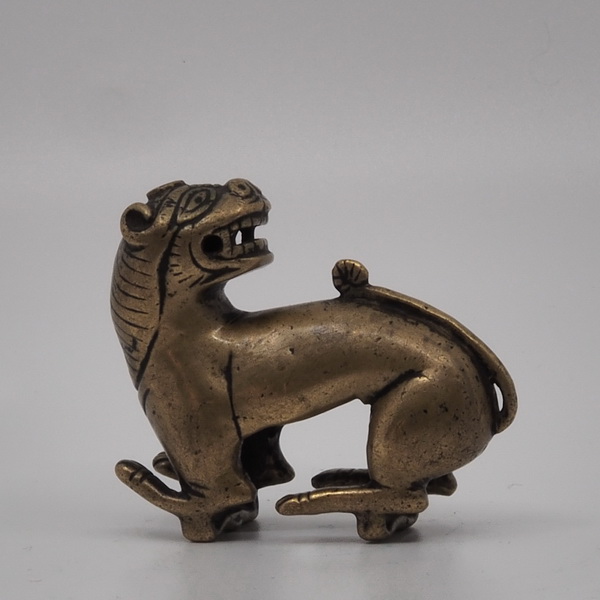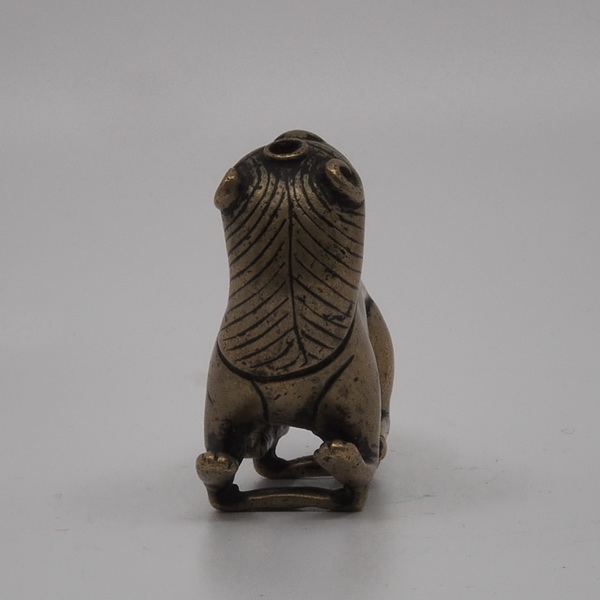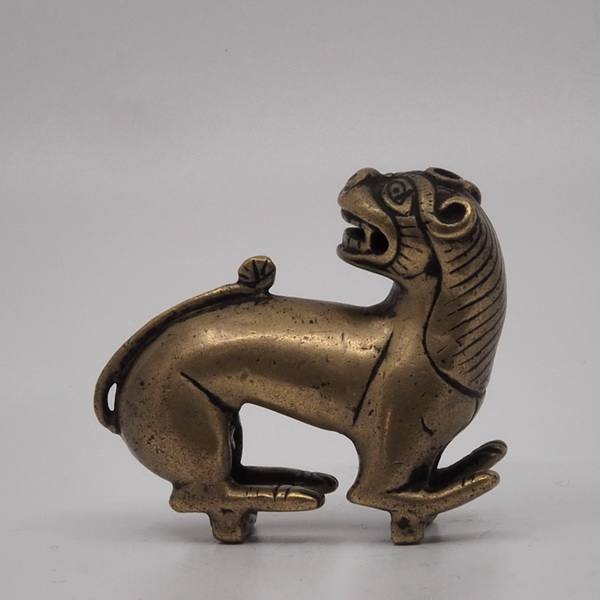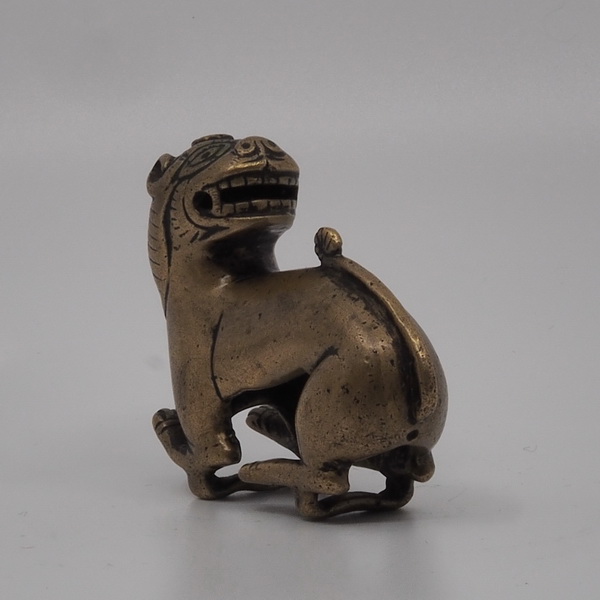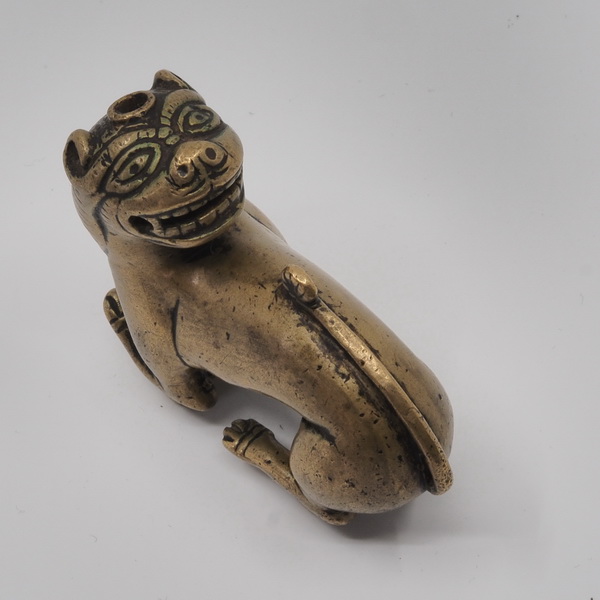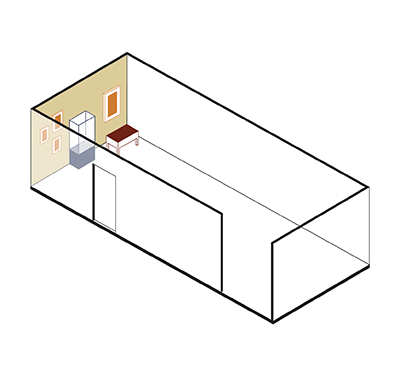ABS 314
Code: ABS 314
Country: Tibet
Style: Imperial Period (Yarlung)
Date: 800 - 900
Dimensions in cm WxHxD: 6.2 x 7 x 3
Materials: Brass
Squatting and hissing lion looking backwards
This statue of a squatting lion appears to be very early and may date back to the Tibetan imperial dynasty, popularly called Yarlung dynasty. As indicated by the tenons at the pair of feet, the lion was probably attached to an object, possibly a vessel. According to archaeological and literary references, sculptures of animals and especially of lions were very popular among the Tibetans of that period.
In Buddhism, lions are a symbol of the Buddha Shakyamuni and the bodhisattvas, the "descendents of the Buddha" or "Buddha's lions". In the iconography we find them in their role of dharma protectors supporting the throne of the buddhas and bodhisattvas. Examples are the Medicine Buddha, Vairochana, Ratnasambhava, Manjushri, Vaishravana as well as Prajnaparamita, the green Tara and Tashi Tseringma. They are also found in pairs, guarding the entrances of monasteries and shrines or gravesites.
In Tibet and Nepal however, the lions have become "snow lions". In these mountainous regions there are no actual lions, but snow leopards.
Snow lions, in turn, are mythical creatures depicted in white or blue colour with a turquoise or orange mane floating in the wind. They bear a wrathful expression with eyes and mouth wide open. Freely they roam in the high snowy mountains, symbolising the wisdom, fearlessness and sacred dignity of those dharma practitioners who live in the pure mind, free of any delusions. They subdue all beings with their great love, compassion and wisdom.
This statue of a squatting lion appears to be very early and may date back to the Tibetan imperial dynasty, popularly called Yarlung dynasty. As indicated by the tenons at the pair of feet, the lion was probably attached to an object, possibly a vessel. According to archaeological and literary references, sculptures of animals and especially of lions were very popular among the Tibetans of that period.
In Buddhism, lions are a symbol of the Buddha Shakyamuni and the bodhisattvas, the "descendents of the Buddha" or "Buddha's lions". In the iconography we find them in their role of dharma protectors supporting the throne of the buddhas and bodhisattvas. Examples are the Medicine Buddha, Vairochana, Ratnasambhava, Manjushri, Vaishravana as well as Prajnaparamita, the green Tara and Tashi Tseringma. They are also found in pairs, guarding the entrances of monasteries and shrines or gravesites.
In Tibet and Nepal however, the lions have become "snow lions". In these mountainous regions there are no actual lions, but snow leopards.
Snow lions, in turn, are mythical creatures depicted in white or blue colour with a turquoise or orange mane floating in the wind. They bear a wrathful expression with eyes and mouth wide open. Freely they roam in the high snowy mountains, symbolising the wisdom, fearlessness and sacred dignity of those dharma practitioners who live in the pure mind, free of any delusions. They subdue all beings with their great love, compassion and wisdom.

